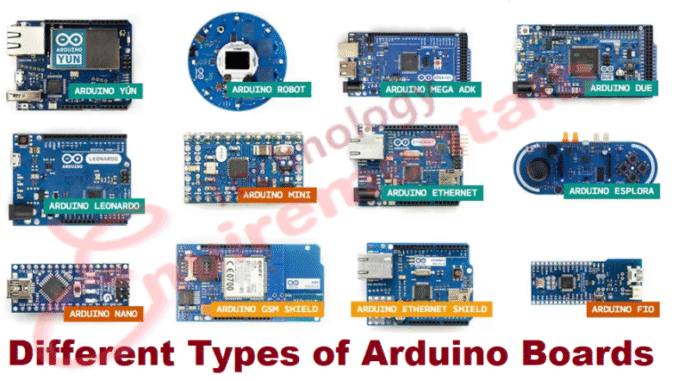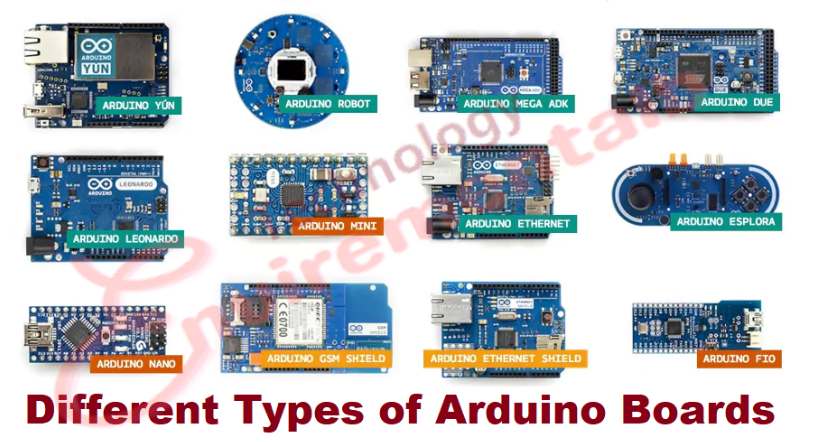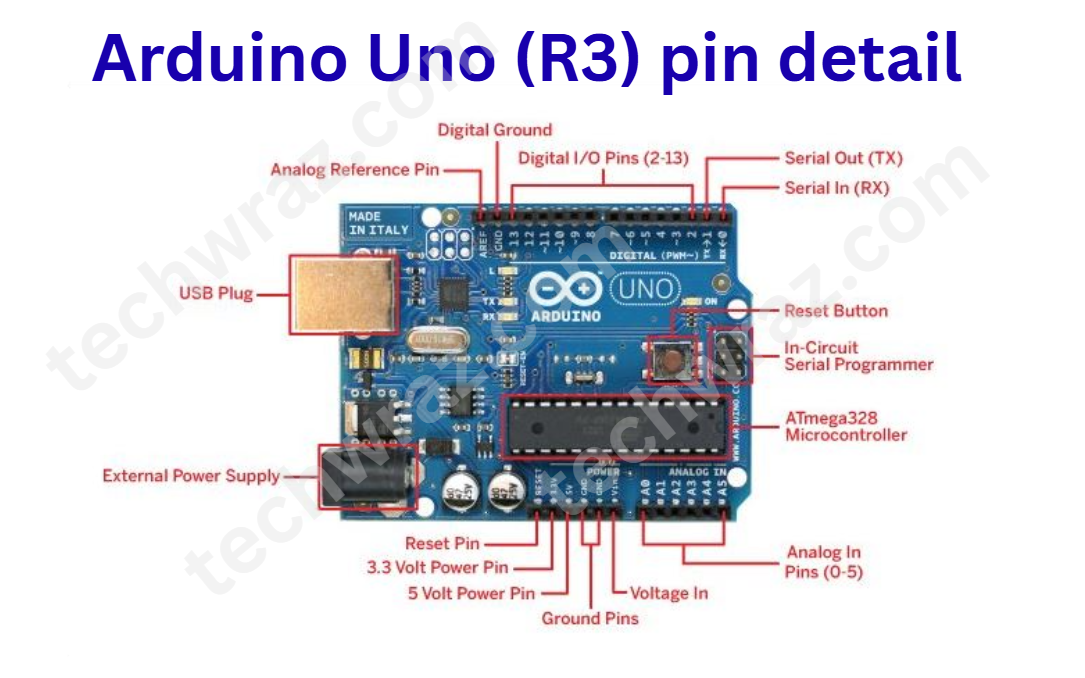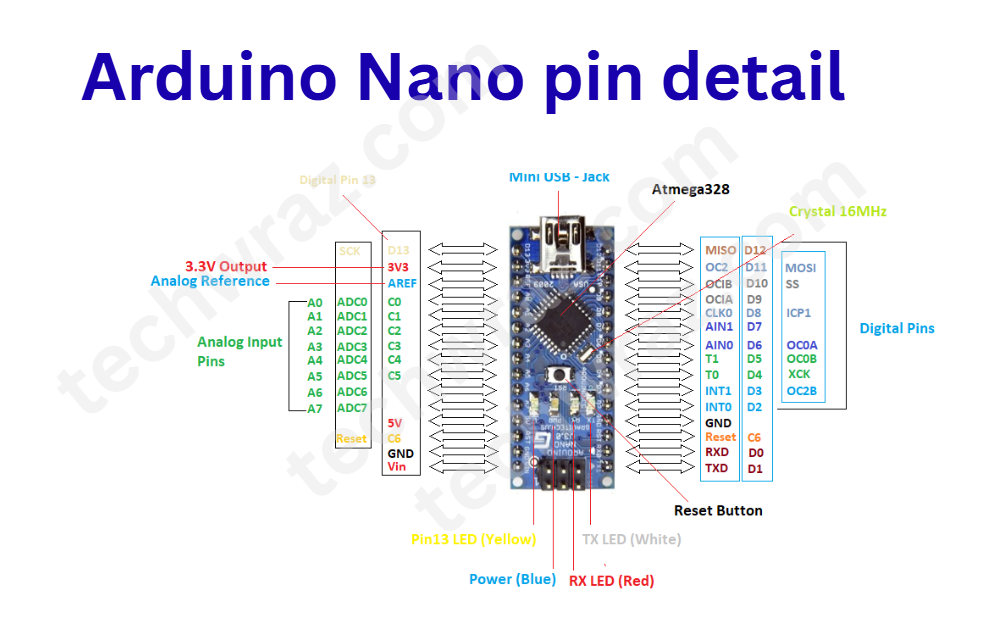
In this article we are going to explain different types of Arduino boards with their comparison. The Arduino is a remarkable device. It was designed in the Ivrea Interaction Design Institute; it can be used without deep knowledge in electronics and programming concepts. This board is modified from time to time to adopt the new requirements of the modern age. These boards are used to produce a variety of applications, including 3D printing, wearables, and embedded surroundings. Arduino boards are open-source boards, and it allow users to build projects according to exact needs. Different types of Arduino boards are used to make thousands of projects for scientific and simple experiments and also for final projects. Designers fromall over the world use these boards; artists, students, hobbyists, programmers, and experts use this open-source stage.
Types of Arduino Boards
The Arduino board is an open-source device used to make almost all types of electronics projects. It consists of a microcontroller and a part of the software to run on your PC, used to upload and write computer code to the physical. The Arduino platform has become very famous with designers just starting out with electronics. In the starting programmable circuit boards, the Arduino does not require separate hardware. The Arduino IDE uses a basic version of C++ that makes it simpler to learn the program.
Why Arduino Boards over Simple Boards?
Arduino boards are used in different engineering projects and different applications nowadays mostly. Arduino software is very simple to use for learners, yet adequately flexible for advanced users. It runs Windows, Linux, and Mac. Teachers as well as students in the schools utilize it to design low-cost scientific instruments.
Arduino also makes the working process of microcontrollers very simple; it gives some advantages over other systems for teachers, students, and beginners.
- It is inexpensive.
- It is cross-platform.
- Simple and clear programming environment
- Open-source and extensible software
- Open source and extensible
Features of Different Types of Arduino Boards
| Arduino Board | Processor | Memory | Digital I/O | Analogue I/O |
| Arduino Uno | 16 MHz ATmega328 | 2KB SRAM, 32KB flash | 14 | 6 input, 0 output |
| Arduino Due | 84 MHz AT91SAM3X8E | 96KB SRAM, 512KB flash | 54 | 12 input, 2 output |
| Arduino Mega | 16 MHz ATmega2560 | 8KB SRAM, 256KB flash | 54 | 16 input, 0 output |
| Arduino Leonardo | 16 MHz ATmega32u4 | 2.5KB SRAM, 32KB flash | 20 | 12 input, 0 output |
Different Types Of Arduino Boards
Arduino boards are coming into the market day by day with extended features and upgraded versions. Here we are going to explain some important Arduino.
- Arduino Uno (R3)
- Arduino Nano
- Arduino Micro
- LilyPad Arduino Board
- Arduino Bluetooth
- Arduino Diecimila
- RedBoard Arduino Board
- Arduino Mega (R3) Board
- Arduino Robot
- Arduino Esplora
- Arduino Pro Mic
- Arduino Ethernet
- Arduino Zero
- Fastest Arduino Board
Arduino Uno (R3)
Arduino UNO (R3) is a great option for your initial Arduino. It consists of an ATmega328P-based microcontroller. It is very simple to use as compared with other types of Arduino boards. It has 14 digital I/O pins, where 6 pins can be used as PWM, 6 analog inputs, a USB connection, a reset button, a power jack, an In-Circuit Serial Programming header, etc. It has everything required to hold up the microcontroller.
Arduino Nano
Arduino Nano is a small board based on microcontrollers like ATmega328P or ATmega628. The connection of this board is the same as to the Arduino UNO board. This kind of microcontroller board is very small in size, flexible, sustainable, and reliable.
It is small in size. As compared with the Arduino Uno board. The devices like mini USB and Arduino IDE are necessary to build the different types of electronics projects. This board includes analog pins-8, digital pins-14 with the set of an I/O pin, power pins-6, & RST (reset) pins-2.
Arduino Micro
- Arduino Due
- LilyPad Arduino Board
- Arduino Bluetooth
- Arduino Diecimila
- RedBoard Arduino Board
- Arduino Mega (R3) Board
Arduino Mega is a type of microcontroller; it is based on the ATmega2560. It consists of 54 digital input or output pins, and from the total pins, 14 pins are used for the PWM output, 4 pins are used, and 16 pins are used for the analog inputs, for the hardware serial port of the UART. There are pins like a crystal oscillator of 16 MHz, a USB connection, an ICSP header, a RESET pin, and a power jack.
Arduino Mega (R3) Features
- ATmega2560 Microcontroller
- Input voltage – 7-12V
- 16 Analog Inputs
- 54 Digital I/O Pins (14 PWM outputs)
- 16 MHz Clock Speed
- 256k Flash Memory
Arduino Leonardo Board
Arduino Robot
Arduino Esplora
Arduino Pro Mic
Arduino Ethernet
Arduino Zero
Fastest Arduino Board
Comparison of Different types of Arduino Boards
| Arduino Board | Voltage of System | CLK Speed | Digital I/O | Analog Inputs | PWM | UART | Interface of Programming |
| Arduino Uno – R3 | 5V | 16 MHz | 14 | 14 | 6 | 1 | USB through ATMega16U2 |
| Arduino Uno R3 SMD | 5V | 16 MHz | 14 | 14 | 6 | 1 | USB through ATMega16U2 |
| RedBoard | 5V | 16 MHz | 14 | 14 | 6 | 1 | USB through FTDI |
| Arduino Pro 3.3V/8MHz | 3.3V | 8 MHz | 14 | 14 | 6 | 1 | FTDI-Compatible Header |
| Arduino Pro 5V/16MHz | 5V | 16 MHz | 14 | 14 | 6 | 1 | FTDI-Compatible Header |
| Arduino Mini 05 | 5V | 16 MHz | 14 | 14 | 8 | 1 | FTDI-Compatible Header |
| Arduino Pro Mini 3.3V/8MHz | 3.3V | 8 MHz | 14 | 14 | 6 | 1 | FTDI-Compatible Header |
| Arduino Pro Mini 5V/16MHz | 5V | 16 MHz | 14 | 8 | 6 | 1 | FTDI-Compatible Header |
| Arduino Ethernet | 5V | 16 MHz | 14 | 6 | 6 | 1 | FTDI-Compatible Header |
| Arduino Fio | 3.3V | 8 MHz | 14 | 8 | 6 | 1 | FTDI-Compatible Header or Wirelessly via XBee† |
| LilyPad Arduino 328 Main Board | 3.3V | 8 MHz | 14 | 6 | 6 | 1 | FTDI-Compatible Header |
| LilyPad Arduino Simple Board | 3.3V | 8 MHz | 9 | 4 | 5 | 0 | FTDI-Compatible Header |



